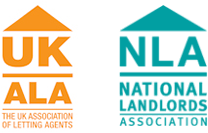HMO
Introduction
If you have a property which is one of the following types it is an HMO:
Today we are going to be looking at fire safety requirements for houses in multiple occupation (HMOs). Whether you are thinking of buying an HMO or refurbishing a property and converting it into an HMO, understanding what fire regulations there are for that kind of property is going to be essential.
- An entire house or flat which is let to 3 or more tenants who form 2 or more households and who share a kitchen, bathroom or toilet.
- A house which has been converted entirely into bedsits or other non-self-contained accommodation and which is let to 3 or more tenants who form two or more households and who share kitchen, bathroom or toilet facilities.
- A converted house which contains one or more flats which are not wholly self-contained (ie the flat does not contain within it a kitchen, bathroom and toilet) and which is occupied by 3 or more tenants who form two or more households.
- A building which is converted entirely into self-contained flats if the conversion did not meet the standards of the 1991 Building Regulations and more than one-third of the flats are let on short-term tenancies.
- In order to be an HMO, the property must be used as the tenants’ only or main residence and it should be used solely or mainly to house tenants. Properties let to students and migrant workers will be treated as their only or main residence and the same will apply to properties which are used as domestic refuges.
HMOs and Buy to Lets
As a landlord or investor, when it comes to HMOs, there are more things to consider, than there are with more straightforward investments such as buy to lets. The fire regulations and rules around fire safety are more detailed and there is more to do to get the property up to standard.
Multiple Tenants
One of the reasons that HMO fire regulations are stricter is that in a house in multiple occupation the tenants won't necessarily integrate with each other or won't necessarily get on with each other that well. They might not even talk to each other on a regular basis.
What you don't tend to have in a family home or straightforward buy to let property is a situation where rooms are regularly locked. In an HMO this can be a standard practice and of course, locked rooms can mean people not having a clear exit and ultimately not being able to get out of the property easily should they have to.






